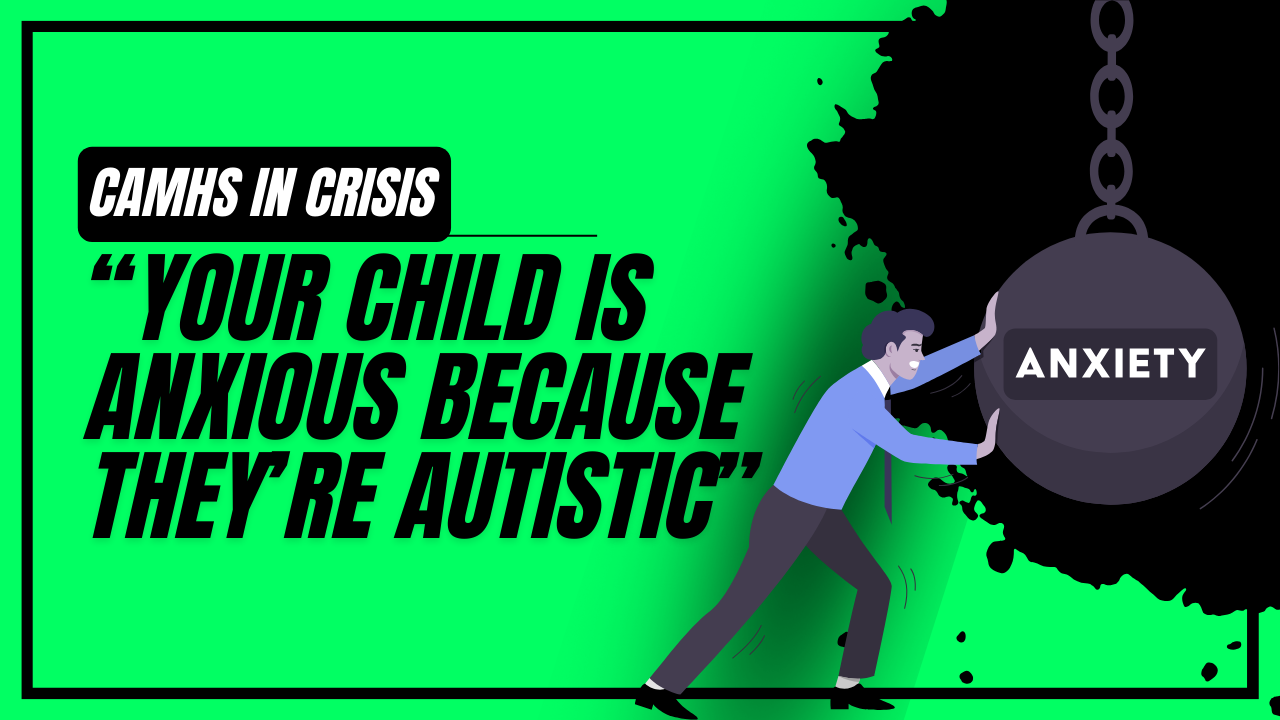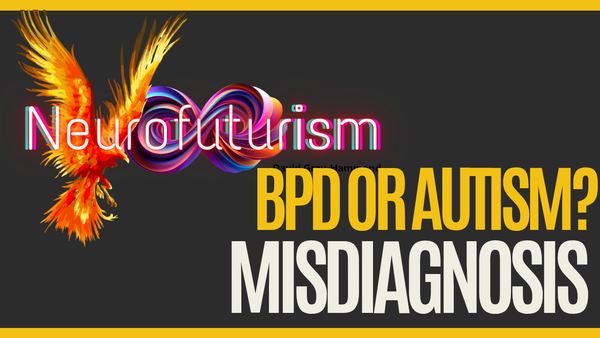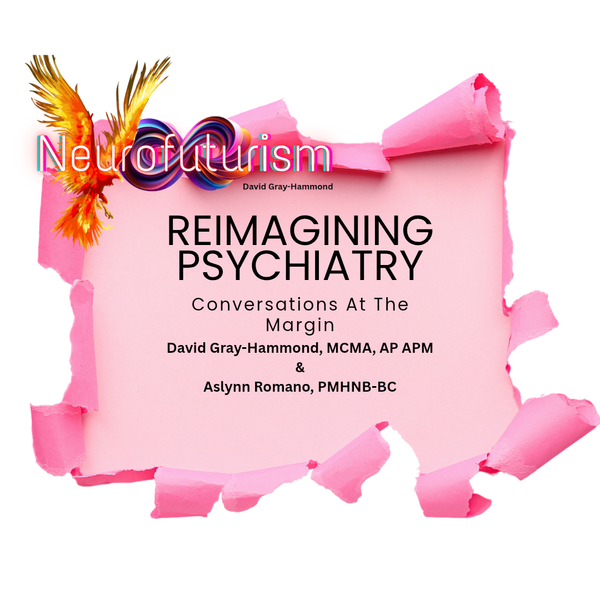CAMHS: "Your child is Anxious because they're Autistic"
Child and Adolescent Mental Health Services (CAMHS) have repeatedly failed Autistic children, particularly through diagnostic overshadowing. This practice involves attributing symptoms to autism, denying necessary support, exacerbating trauma, and contributing to elevated suicide risks. Families als

Child and Adolescent Mental Health Services (CAMHS) have been failing Autistic children for a long time. I myself was failed by them almost two decades a go, and still we see the issues proliferate and get worse. There are countless issues that could be discussed; from under-resourced and overstretched services through to professionals that lack the skills to support Autistic people. It seems it would be difficult to turn a corner in CAMHS without running into an issue. One issue, however, has been a problem for almost all Autistic people and their families. That issue? Diagnostic overshadowing.
What is diagnostic overshadowing?
"Diagnostic overshadowing refers to the tendency to minimize or misinterpret symptoms in individuals with a pre-existing diagnosis, such as autism, as being solely a manifestation of their primary condition."
Charlton (2018)
In this context, diagnostic overshadowing could be witnessed as being a professional telling you that your Autistic child is anxious because they're Autistic. It implies a circular logic where in a person has an experience because of their diagnosis, and has that diagnosis because they have the experience. The problem, however, is that anxiety is not a part of the diagnostic criteria for autism. Professionals attributing anxiety to autism are at best, ignorant, and at worse, inventing a reason not to help.
How common is anxiety in autism and CAMHS services?
Overall rates of anxiety have increased significantly over time (Cybulski, 2021) around a third of service users have anxiety (Baxter et al, 2018). In terms of Autistic people, up to around 80% of Autistic young people display clinically significant anxiety (Bougeard et al, 2021). When the vast majority of Autistic people are having an experience, we can begin to understand how it has come to be conflated with being a trait of autism. Anxiety though is separate to autism. We experience anxiety because of the high rates of trauma in our community. If you read the criteria for autism in both the DSM and ICD diagnostic manuals, anxiety is not a feature.
What happens when CAMHS make anxiety a part of being Autistic?
Essentially, they are denying support for the child or young person in question. The child is told they are anxious because they are Autistic, and then told that they can not be supported because services are not designed for Autistic people. It is further trauma on top of pre-existing struggles. It potentiates the suffering. Families told this are left at greater need for a service that refuses to support them.
According to governmentevents.co.uk, despite only representing 1% of the population, Autistic people account for 11% of suicides. Let us also not forget the statistic from the Royal College of Psychiatrists that states Autistic children and young people are up to 28 times more likely to think about or attempt suicide. Diagnostic overshadowing such as that explored here feeds into the young person's struggle presenting a significant risk for suicidality.
The Fallout for Families Being Failed by CAMHS
When an Autistic child is failed, it impacts the family as well. Many parents of Autistic children are also neurodivergent (even if they don't realise) and have faced similar traumas. This compounding of suffering is made worse by diagnostic overshadowing. When families can't access support for their children, it is unsuprising that up to 79% of parents of CAMHS patients have a diagnosable mental health issue (Campbell et al, 2021). Services are enforcing a mental health crisis across all generations through their inaction. Diagnostic overshadowing plays a significant role in that crisis.
Conclusion
Diagnostic overshadowing has become a tool of defensive practice and resource gatekeeping by a service that is not fit for purpose. In order to improve the wellbeing of Autistic people and their families, we need to encourage professionals to look further than stereotypes and misinformed assumptions.
- Professionals need a better understanding of autism diagnostic criteria.
- They need to build a culture of support rather than gatekeeping.
- Professionals need to acknowledge that diagnostic overshadowing is creating a crisis for not just the child, but the whole family unit.
Until CAMHS are willing and able to look beyond their own limited training on autism, this issue will continue to place entire families at risk. Too many have been lost to practices like diagnostic overshadowing, and it's time that we stopped that from happening.
References
Baxter, A. J., Scott, K. M., Vos, T., & Whiteford, H. A. (2018). Global prevalence of anxiety disorders: A systematic review and meta-regression. Psychological Medicine, 48(5), 805-816
Bougeard, C., Picarel-Blanchot, F., Schmid, R., Campbell, R., & Buitelaar, J. (2021). Prevalence of autism spectrum disorder and co-morbidities in children and adolescents: a systematic literature review. Frontiers in psychiatry, 12, 744709.
Campbell, T. C., Reupert, A., Sutton, K., Basu, S., Davidson, G., Middeldorp, C. M., ... & Maybery, D. (2021). Prevalence of mental illness among parents of children receiving treatment within child and adolescent mental health services (CAMHS): a scoping review. European Child & Adolescent Psychiatry, 30, 997-1012.
Charlton, R. (2018). Autism: An Introduction to Psychological Theory. Routledge.
Cybulski, L., Ashcroft, D. M., Carr, M. J., Garg, S., Chew-Graham, C. A., Kapur, N., & Webb, R. T. (2021). Temporal trends in annual incidence rates for psychiatric disorders and self-harm among children and adolescents in the UK, 2003–2018. BMC psychiatry, 21, 1-12.


